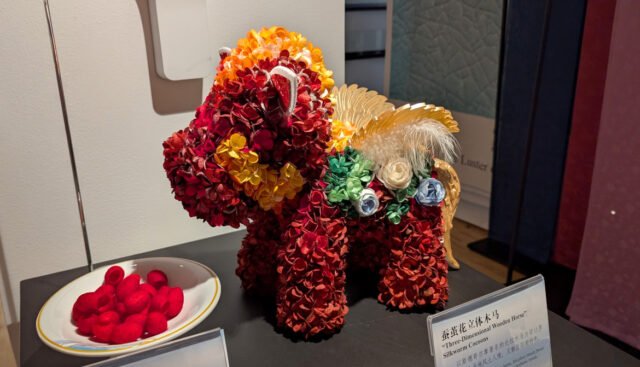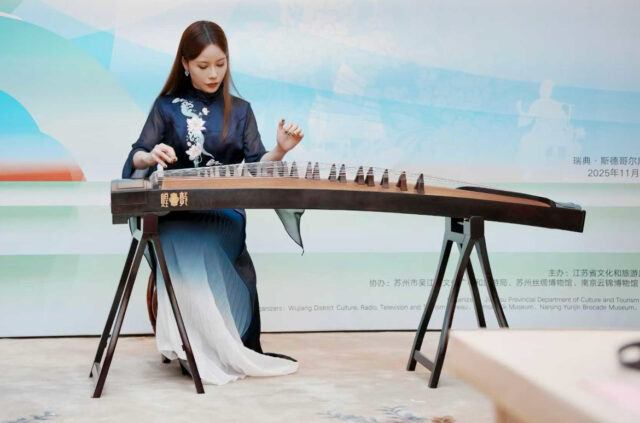Katrina and Lars Holte live a slightly different life in Hillsboro, Oregon. Three years into their marriage, Katrina decided to quit her stressful job and turn back the clock - today she lives like a 1950s housewife.
– I feel like I’m living how I always wanted to. It’s my dream life and my husband shares my vision, Katrina Holte told the New York Post.
The couple's home is like stepping into a bygone era, where everything from the furniture to the clothes to the housekeeping has a 1950s feel. Katrina spends her days washing, cleaning, sewing and cooking, but her main job is taking care of her husband.
– It is a lot of work. I do tons of dishes, laundry and ironing, but I love it and it’s helping to take care of my husband and that makes me really happy.
But Katrina, who also sews clothes part-time and sells them online, obviously asked her husband before quitting her full-time job.
– I spoke to my husband and told him I want to be a housewife and he said that was fine with him, Katrina says. It was a fantastic feeling when I quit.
Washing, dusting and sweeping
A typical day for Katrina begins at 6:30 a.m. She lays out Lars' clothes for the day, makes him breakfast and packs his lunch. After eating herself, she does 15 minutes of light exercise.
– We have the idea today that we have to push our bodies to the limit, but in the 1950s, the attitude was simply that you had to take care of it.
After her workout, she showers and applies makeup with products that were common in the 1950s, such as Revlon and Pond's, and then uses rollers to create the classic hairstyle. When she's done getting ready for the day, it's time for her chores.
– I will then spend a good hour doing the laundry, dusting and sweeping. I make sure everything is kept in its place. After lunch, when my house is tidy and smelling fresh, I will go upstairs and sew either for myself, for my customers or to try out new patterns.
"Cheating" with TV
Around 4:00 p.m., Katrina usually starts preparing dinner. She wants everything to be ready when Lars comes home from work.
– I usually cook recipes from the era like pot roasts or chicken pies and make sure there are vegetables. In the 1950s, housewives liked to make sure all the food groups were there.
When Lars comes home, he likes to hang up his jacket himself, but Katrina doesn't mind.
– I read in a 1950s book that if a man wants to hang his own coat up, you should not feel like it makes you a bad housewife.
Instead, she serves him a cold glass of water and a plate of snacks.
– After dinner, we play board games like Scrabble, or watch our vintage shows like ‘I Love Lucy’ or ‘The Donna Reed Show', Katrina says. Sometimes we read. I like reading 1950s cookbooks and vintage beauty and sewing magazines.
The couple does watch television, but say they hide it when not in use so as not to disrupt the '50s style.
"A man needs to feel pampered"
Katrina says that Lars is definitely not a controlling man, but that they have an equal marriage. For example, Lars wouldn't complain if she was late for dinner, but she also knows that it means a lot to him that she has the food ready on time.
– A man needs his wife to make him feel spoiled every once in a while. He makes a lot more money than I do. He works very long hours and makes my dreams come true, so I try to make his come true, too.
Katrina says she believes women should support each other.
– If a woman says she wants to be a homemaker, we should not say that’s not right, Katrina says. What’s right for me might not be right for someone else. We all have to do what’s right for ourselves.
Not perfect - but safer
– No decade is perfect, definitely we had big social problems in the ’50s, but the people I talk to who lived through the era say it was a time when you could leave your door unlocked and you didn’t need to worry about people breaking in. People today have forgotten how to talk to people they don’t agree with and they have lost all their manners.
The couple is now looking forward to having children. Katrina would like to have four, but she realizes she may not have the time to manage the house properly.
– I’m not sure I’ll be able to keep my house in perfect order but we would love to have a big family, Katrina says. I definitely plan to put my little girls in vintage dresses, petticoats and hats, but when they get older, they can make their own choices.








